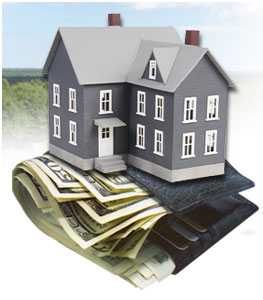The 1031 exchange can be complicated… actually anything having to do with the IRS can be complicated. You’ll hear real estate agents talk about how you can 1031 one property for another. You might know that it has to do with tax implications but truly understanding it can mean reading through a bunch of legal speak and still not comprehending what it means. However, if you are a property investor it’s important to understand the 1031 exchange and whether or not it can benefit you. So, we’re going to try to simplify it in laymans terms as much as possible. Here goes:
1.) It goes by a few nicknames
In order to understand what the 1031 is we need to be able to recognize it. So, if you hear “like-kind exchange” come up in conversation it’s just another name for the 1031. It also can be name dropped as “Starker”.
Bottom Line: 1031 exchange, Like-kind exchange, and Starker are all the same thing.
2.) What is a 1031?
The Internal Revenue Code Section 1031 can be seen in its entirety here. Here’s the digest:
“No gain or loss shall be recognized on the exchange of property held for productive use in a trade or business or for investment, if such property is exchanged solely for property of like-kind which is to be held either for productive use in a trade or business or for investment.”
Forbes has a great article on the 1031 Exchanges here. The author, Robert W. Wood, does an excellent job of making the complicated terms easy to understand:
“Broadly stated, a 1031 exchange (also called a like-kind exchange or a Starker) is a swap of one business or investment asset for another. Although most swaps are taxable as sales, if you come within 1031, you’ll either have no tax or limited tax due at the time of the exchange.
In effect, you can change the form of your investment without (as the IRS sees it) cashing out or recognizing a capital gain. That allows your investment to continue to grow tax deferred. There’s no limit on how many times or how frequently you can do a 1031. You can roll over the gain from one piece of investment real estate to another to another and another. Although you may have a profit on each swap, you avoid tax until you actually sell for cash many years later. Then you’ll hopefully pay only one tax, and that at a long-term capital gain rate (currently 15%).
Warning: Special rules apply when depreciable property is exchanged in a 1031. It can trigger gain known as “depreciation recapture” that is taxed as ordinary income. In general, if you swap one building for another building, or one machine for another machine, you can avoid this recapture. But if you exchange improved land with a building for unimproved land without a building, the depreciation you’ve previously claimed on the building will be recaptured as ordinary income.”
Bottom Line: A 1031 exchange allows an investor to avoid a gain or loss when exchanging one investment or business property for another and it can be done an unlimited number of times.
3.) What kind of property qualifies?
If you’ve read all of this and are thinking you can roll this into a new personal home… we hate to burst your bubble but you can’t. The 1031 exchange only works for business, trade or investment property. The properties have to be “like-kind” to one another.
Asset Preservation offers some real estate examples of what would be considered a like-kind investment:
-
Unimproved for improved property
-
Fee for leasehold with 30+ years to run
-
Commercial building for vacant land
-
Duplex for commercial property
-
Single family rental for an apartment
-
Industrial property for rental resort property
Bottom Line: You can only use the 1031 for a business, trade or investment property. The properties must be “like-kind” to one another.
4.) Why should I consider the 1031?
Consider it a free loan from the IRS because that’s essentially what you would be getting. According to the APIExchange.com there are three main benefits to a 1031:
-
Preservation of equity
-
Maximize return on investment
-
Increased cash flow from larger properties
Asset Preservation offers this example which really illustrates why an investor would be interested in a 1031 exchange:
“An investment property owner sells a rental property for $400,000. The owner originally purchased the property for $200,000. (This) comparison analyzes the value of the new property that could be acquired in a sale versus an exchange. The comparison assumes an investor makes a 25% down payment and finances 75% of the property (75% loan-to-value ratio).”
SALE VS. AN EXCHANGE |
||||||||||||||||
|
||||||||||||||||
|
This example illustrates that the real power of a tax deferred exchange is not just the tax savings – it is the increase in purchasing power generated by this tax savings! |
Bottom Line: When done correctly, a 1031 allows an investor to defer capital gains taxes until the investor chooses to recognize it resulting in more money to invest.
5.) What if no one wants to “exchange” properties?
It’s probably not very likely that you will decide you have a property ready to swap- and at that exact moment the owner of the property you want can’t wait to get his or her hands on your property. It could definitely happen- but let’s face it – it’s probably not likely. Thankfully, there are ways around this scenario and those routes allow the 1031 to be much more feasible. Most of the time a third party is involved called a Qualified Intermediary. The third party would hold the money after you sell your property until you are ready to buy your replacement property. (Just remember you have to complete the purchase of the new property within a certain timeframe of selling the old property or you will be taxed.) Since you would be using a third party it would be considered a delayed exchange. Learn more about a delayed exchange here.
Bottom Line: You can use a third party to facilitate a 1031 instead of technically trading properties.
6.) It’s all about the details
There area always details when you’re dealing with something like a 1031. It might be wise to hire someone to help you navigate your way through it. Here are a few things you’ll need to remember:
1.) You must close on the new property within six months of closing on the old property. It’s the IRS and they mean business. You have exactly 180 days from the day your property closes to close on a new property. The closing must fall within the timeline.
2.) Money left over will be taxable. If there is cash leftover after the purchase of the new property you will get that money back from the third party and you must be prepared to pay the necessary taxes on it.
3.) This blog is not comprehensive and there are lots of other details you’ll want to be aware of before you decide to move forward with a 1031. Your real estate agent is an excellent resource for information about a 1031 exchange. Good luck!



Leave a Reply